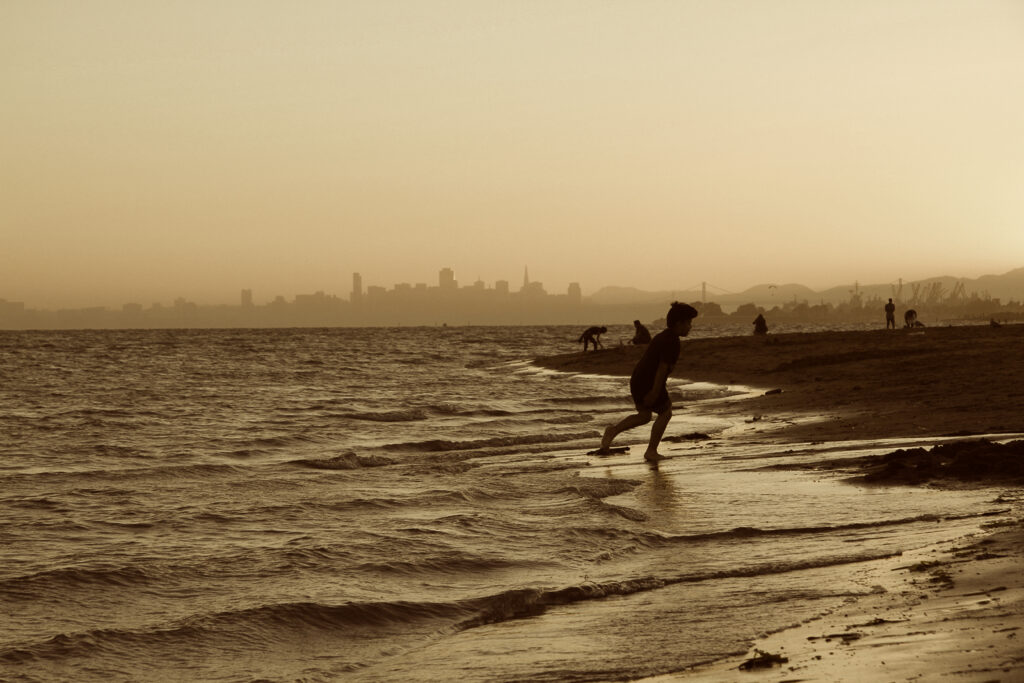
For the first time in decades, California’s federal estuary management and water quality programs are getting a big bump in bankroll. Priority actions in the newly updated Estuary Blueprint, a 25-action consensus plan for improving the health of San Francisco Bay and the Delta, are poised to take advantage of a new influx of federal money.
“We’re fortunate with timing,” says San Francisco Estuary Partnership (SFEP) environmental planner Darcie Luce. Completed this spring, the 2022 Blueprint includes some well-thought-out actions oriented toward greening grey infrastructure, making the region more resilient to climate change, and improving equity in adaptation planning and projects — all of which are federal priorities.
The new money will flow toward Estuary Blueprint actions and related projects in multiple ways: the March 2022 Consolidated Appropriations Act bill will provide a one-time injection of $24 million to the San Francisco Bay Water Quality Improvement Fund, up from the previous average of about $5 million for the fund’s annual budget. Another $24 million from the November 2021 Bipartisan Infrastructure Law (BIL) will go to US EPA Region 9. The latter will also provide $4.5 million over the next five years directly to the Estuary Partnership for implementation of the Blueprint.
Despite many lean years in estuary management budgets, forward-thinking groundwork in the 2016 Blueprint that remains relevant today puts the partnership in a promising position to implement the Biden administration’s Justice40 Initiative. According to a White House blog, the initiative “is a whole-of-government effort to deliver at least 40% of the overall benefits from Federal investments in climate and clean energy to disadvantaged communities.”

The 2022 Blueprint includes one new action explicitly aimed at equity through engaging frontline, underserved, and indigenous communities in estuary restoration and management, and incorporating social and cultural science in planning. Equity is also a focus of specific tasks in most of the other actions. “We created a space that will open the door to advancing equity-oriented tasks and actions,” says Luce.
Across many actions, highlights of the updated regional Blueprint include accelerating wetland restoration, adapting to sea-level rise, and performing other multi-benefit nature-based projects along the shoreline; cutting through “green tape” and removing hurdles to implementing nature-based solutions; decreasing carbon emissions and increasing carbon sequestration; reconnecting and restoring creeks to provide habitat and reduce flooding; and increasing the use of dredged sediment and soils for flood management and restoration.
“Sediment looms large in the updated Blueprint,” says Luce. Its approach benefits from extensive research and planning work done in the San Francisco Estuary Institute’s recent Sediment for Survival report concerning how much sediment will be needed to adapt to rising sea levels and restore buffering wetlands, and where it might come from. Seven Blueprint tasks add weight to the region’s sediment strategy.
Years of working to create a stronger throughline between the upper Estuary (Delta and watershed) and the lower Estuary (Bay and ocean coast) are also apparent in the updated Blueprint. Almost every current action includes a Delta component, according to Luce. Steadily increasing collaboration between the Delta Stewardship Council and the SFEP was key, she says.
While the task and action list has shrunk dramatically since 1993, when the first 300-page Comprehensive Conservation and Management Plan (early Blueprint) was published, the list of partners only seems to be getting longer. “Since the Blueprint isn’t regulatory, we have the freedom to be collaborative while still holding each other accountable for implementation,” says SFEP director Caitlin Sweeney.
With a bigger budget and years of experience under its belt, the Partnership is indeed well positioned to push the frontiers of environmental equity, adaptation planning, and nature-based solutions across the region. “It’s deep work that will take years.” says Luce.